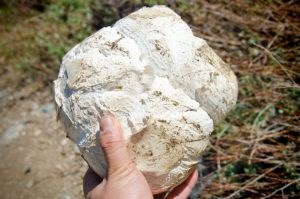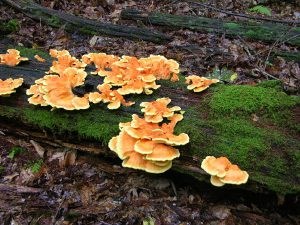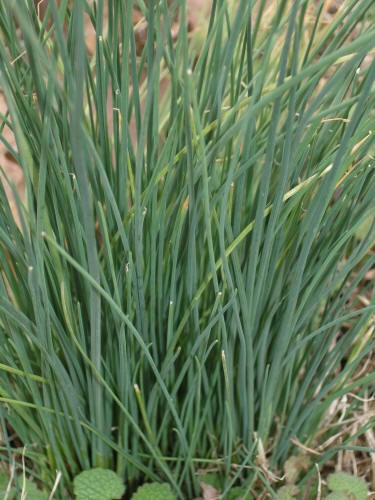As the chill becomes a usual feature to the air, it is evident that autumn is here and winter to follow it. What does this mean? Even weeds—our wild food and medicine are dying. Actually, it is more so a deep sleep than a death. Given most are perennials with long roots, they will revive themselves come March. Please know there are weeds that are annual, having a one year life cycle in either the winter or summer, and biennial, taking two years to grow.
For the homeowner cultivating a green lawn or farmer growing a particular crop, they are a nuisance. For the naturalist, they are the blessing of nutrient dense food.
The growing season is roughly between March and early November (please remember the winter annuals). Herb Witch in Training is so inspired by the sight of all the free food and flowers that grow between March and early November here in Brooklyn and beyond that this column will "hibernate" until spring 2016. The plants for study in this post are Puffball Mushroom, Chicken-of-the-Woods Mushroom, Wild Garlic, and Chinese Parsley. Hey that sounds like a delicious soup.
In the "More Herbs Around the Neighborhood" post I explained that mushrooms fall into either the category of mucorrhizal, saprotropic, or endophytic. Puffball mushrooms (Calvatia gigantea) are saprotropic, meaning they live and feed on dead organic matter. Puffball mushrooms are large, round, and white, when young and edible, or brown, when they are old and ready to spread their spores. The fresh mushroom has a fleshy white interior with no gills.

For a number of years, I sighted these dull white balls in parks and woods. I thought someone had balled up some newspaper and tossed it away. It was a delight to find out from Tioma Allison that they were edible mushrooms. Tioma slices them thinly for use as substitutes for lasagna noodles when she prepares that dish or eggplant parmigiana. Puffball is a source of protein, iron, manganese, and zinc. Its medicinal uses include the spores slow bleeding and prevent infection.
Chicken-of-the-Woods mushrooms (Laetiporus sulphureus) are also saprotropic. It is an edible, orange plate- or fan-shaped mushroom that grows on oak, willow, and chestnut trees. Unfortunately, they cause brown rot in the trees. The young mushrooms are moist, rubbery, and the color ranges from yellow to bright orange. As the name suggests, the mushroom tastes like chicken. Some people experience mild to significant allergic reactions such as swollen lips, stomach pain, and vomiting. These reactions may be as a result of the mushroom absorbing the toxins from the trees the live and feed on. It is best to eat young mushrooms and to try a small amount to see how your body responds to it (even better, walk with an experienced naturalist). If there isn't a negative reaction, it may be prepared the way one would do with chicken to make soups, stews, baked, and more. Some people make Chicken-of-the-Woods and rice. This mushroom provides fiber, protein and Vitamins C, B, D and K to the diet.

Chinese Parsley, also called Coriander and Goutweed (Coriander sativum) is in the Apiaceae family. It contain Vitamins K, C, and A as well as flavinoids, phytonutrients, folic acid and iron. Chinese Parsley is savory. It can be made into a tea or used as a garnish or seasoning for soups and stews. Its medicinal

value as a tea is its ability to lower blood sugar levels and control blood pressure, if it's high. The fresh juice can by rubbed on the skin to reduce the itch from insect bites. Chinese Parsley is an effective kidney cleanser and it fights against free radicals and removes heavy metals from the body. So, this plant can be drunk, eaten, or even, poured in the bath water for good results. Chinese Parsley is yet, another, plant that this writer first discovered in the wild and later, learned it is in grocery stores.
Wild Garlic also called Field Onion or Garlic Grass (Allium vineale) is found in parks, fields, and forests. It looks like cultivated garlic or spring onions. This plant, at first glance, may look like a blade of grass but, upon closer look, the blades are tubular. Pulling from the base of the tubular blade, the bulb will easily dislodge from the ground. If the blade is flat it is Field Onion. What you have in your hand is a

miniature scallion or onion. As small as it, its aroma is heady. Where there is no scent, drop it because it is the poisonous look alike. If a neighbor complains of his lawn being overrun by them, offer to pull them up. It is your harvest. Wild Garlic and Wild Onion's root and leaf are edible. It is great in sandwiches, soups, salads, and pesto. It is crucial that they are harvested away from automobile traffic. Its medicinal uses include being antibiotic; repelling insects by eating a large quantity; the bulb juice is antiseptic; and lowering LDL cholesterol. Wild Garlic is high in Vitamins C and A, potassium, calcium, manganese, and selenium.
So, here are the ingredients to a delicious soup, stew, or sandwich. Check your backyard or friend's backyard. Look around a vacant lot, or visit the woods to find them. The New York metropolitan area still has temperate weather. Enjoy the wild food before the chill stays with us.




